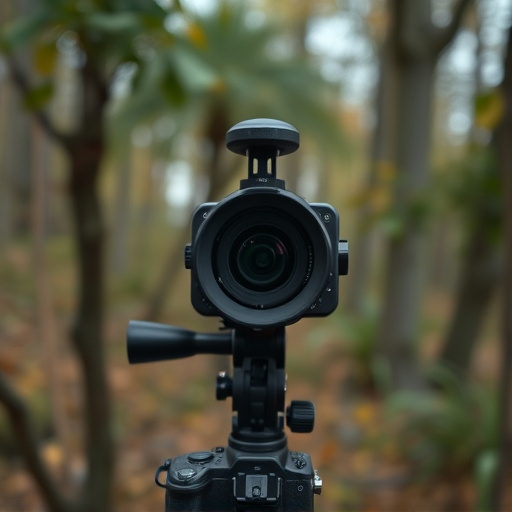Micro cameras, advanced with high-resolution video, motion detection, and extended battery life, offer discreet yet powerful child protection tools. Strategically placed at home or in toys, they provide real-time monitoring data to parents and caregivers. RF sweep techniques detect these hidden devices, ensuring privacy and security for children. Ethical use of such technologies is crucial, balancing safety with respect for individual freedoms and privacy boundaries, governed by local regulations and consent requirements.
Uncovering hidden cameras has become a crucial aspect of safeguarding children in today’s digital age. This tutorial guides you through an essential tool: RF (Radio Frequency) detector sweeps, a game-changer in identifying micro cameras used for child protection. We’ll explore the intricacies of these tiny yet powerful devices, the step-by-step process of using RF sweep techniques, and ethical considerations surrounding their deployment. Get ready to learn how to navigate this modern-day enigma.
- Understanding Micro Cameras for Child Safety
- Detecting Hidden Cameras Using RF Sweep Techniques
- Ethical Considerations and Legal Implications of Camera Detection
Understanding Micro Cameras for Child Safety
Micro cameras, often referred to as hidden cameras or surveillance devices, have evolved significantly in their role for child protection and safety. These tiny yet powerful tools are designed to monitor environments discreetly, making them invaluable assets for parents, caregivers, and law enforcement agencies. With advanced technology, micro cameras can now offer high-resolution video, motion detection, and long-lasting battery life, allowing for continuous surveillance without compromising privacy or aesthetics.
In the context of child safety, micro cameras serve as an extra layer of protection, enabling parents to keep an eye on their children’s activities at home or during outings. They can be strategically placed in play areas, bedrooms, or even within toys, providing real-time insights into a child’s behavior and surroundings. This technology empowers caregivers with valuable data, ensuring peace of mind and the ability to address potential risks promptly.
Detecting Hidden Cameras Using RF Sweep Techniques
Detecting hidden cameras has become a crucial skill in today’s digital age, especially with the prevalence of micro cameras used for child protection and privacy surveillance. RF (Radio Frequency) sweep techniques offer an effective method to uncover these covert devices. The process involves scanning a location for any radio signals that may be emanating from a hidden camera, providing valuable insights into potential security breaches.
By utilizing specialized equipment, professionals can perform RF sweeps, detecting even the smallest micro cameras. This non-invasive technique allows for thorough inspections without disturbing or damaging surfaces. It’s an essential tool for parents seeking to safeguard their children’s privacy and for security experts ensuring the integrity of sensitive spaces.
Ethical Considerations and Legal Implications of Camera Detection
The detection of hidden cameras, especially those used in micro cameras designed for child protection, raises important ethical and legal questions. While the use of such technology can be a powerful tool in ensuring safety, it’s crucial to navigate this landscape responsibly. Unlawful surveillance or the invasion of privacy can have severe repercussions, including criminal charges and civil lawsuits. It’s essential to respect the boundaries set by laws governing surveillance, such as obtaining consent when necessary and adhering to restrictions on public spaces.
When employing RF detector sweeps for hidden cameras, users must be aware of their rights and responsibilities. This includes understanding local regulations regarding camera usage and ensuring that any detection activities are conducted ethically and within legal frameworks. Transparency is key; individuals should know when they’re being recorded or monitored to maintain trust and safeguard privacy rights. Moreover, responsible use of these tools can contribute to a safer environment for children and vulnerable individuals without encroaching on personal freedoms.
The detection of hidden cameras, especially those utilizing micro cameras for child protection, is a critical skill in ensuring privacy and safety. RF detector sweep techniques offer a powerful tool in identifying these devices, but it’s essential to balance this knowledge with ethical considerations and legal implications. As we’ve explored, understanding the technology behind micro cameras and employing responsible detection methods are key steps in safeguarding our personal spaces and vulnerable individuals.
